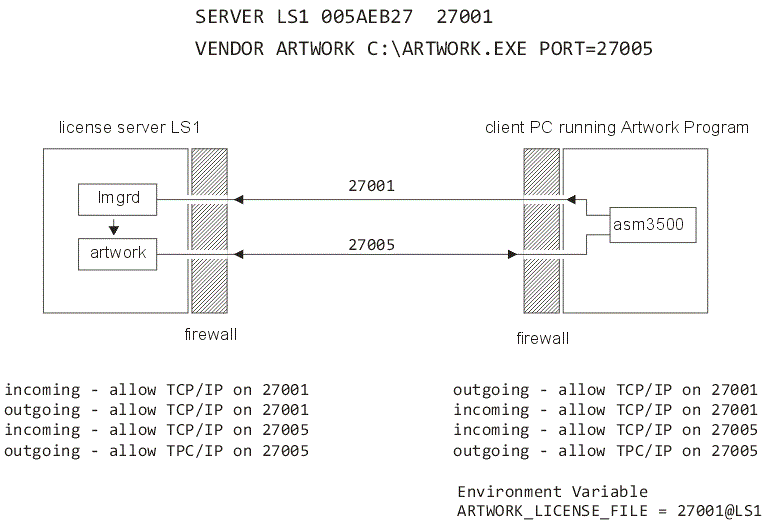Even though one port number is assigned on the SERVER line of the license file, there is actually a second port in use to communicate between the client application (who requests a license) and the license manager system.

The lmgrd program is always "listening" on the port specified on the SERVER line. In our example, this port is 27001. So it is obvious that on the firewall protecting the license server, the IT administrator has to open port 27001 to incoming TCP/IP protocol.
When lmgrd detects a request for a license from a client and the vendor is identified as "artwork", then lmgrd arranges that the artwork daemon respond on a different port.
What is the assigned port for artwork? Well it depends on your license file.
If your VENDOR line does not specify a port, then any random port can (and will) be assigned for artwork to use.
VENDOR ARTWORK C:\FLEXLM\ARTWORK.EXE
This is not recommended as the client PC's firewall is likely set up to block all ports and only allow a few specific ones open for known services. So the artwork daemon will not get a response through to the client and the license process will fail.
Solution?
Select a specific port for artwork to respond on.
VENDOR ARTWORK C:\FLEXLM\ARTWORK.EXE PORT=27005
Then, of course, the network administrator will have to make sure that all the firewalls on both license server/client will allow TCP/IP protocol in both directions. This is usually done by adding "rules" to each firewall's configuration file.
You cannot use the same port that is assigned to lmgrd on the SERVER line. You should not use a port that is already assigned to a different service.
Given how tightly networks are locked down these days, the firewall configuration is often the cause of license server failures.